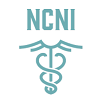Blepharospasm or benign essential blepharospasm (BEB) is a neurological disorder marked by involuntary muscle spasms and contractions of the eyelid muscles. The symptoms occur when the person is awake and disappear during sleep. With time, the spasms may intensify and force the eyelids shut causing functional blindness or substantial visual disturbance.
According to the American Academy of Ophthalmology, the condition affects more women than men with 2,000 cases being diagnosed annually in the U.S. In this blog, we’ll take a look at the symptoms and treatment options of blepharospasm.
Symptoms of Blepharospasm
Blepharospasm generally develops between the ages of 50 and 70 but can affect younger people. Although medical experts aren’t exactly sure why blepharospasm happens, it’s theorized that the cause is abnormal functioning in the part of the brain responsible for controlling the muscles.
The condition is progressive, and the symptoms are aggravated or caused by factors such as eye strain, stress, irritated or dry eyes, insufficient sleep, and certain medications. Sometimes, it’s caused by another underlying neurological disorder like Parkinson’s disease or Tourette syndrome.
Treatment of Blepharospasm
Since blepharospasm can’t be diagnosed with specific lab tests, it’s necessary to visit an ophthalmologist. The ophthalmologist will perform a clinical evaluation while taking into account the patient’s medical history. If blepharospasm is diagnosed, the following treatment options are available:
· Oral medications: Doctors prescribe a range of drugs that inhibit the motor signals sent by the brain.
· Botox injections: Botox or botulinum toxin is the best type of treatment. The toxin weakens the muscles responsible for controlling the eyelids and assists in reducing the symptoms. The effects of this treatment, however, last for around 3 months and must be repeated.
· Surgery: Surgery is the last option and is carried out when all other treatments fail. The Benign Essential Blepharospasm Research Foundation identifies myectomy as the most effective surgical treatment method. It involves removing some or even all of the muscles responsible for eyelid closure. This type of surgery should only be considered if the symptoms are extremely severe and cause functional vision loss.
· Deep Brain Stimulation: According to research, DBS is also a viable method for treating blepharospasm.

A very small percentage of eye twitches are due to serious neurological disorders. However, if the condition persists for more than a week, it’s best to visit a specialist.
Dr. Farzin Pedouim is a movement disorder specialist who offers blepharospasm treatment in Huntington Beach, LA. He has helped numerous patients manage the symptoms and also provides Botox and DBS treatments.
Make an appointment at (949) 239-4410 or by visiting our website.






